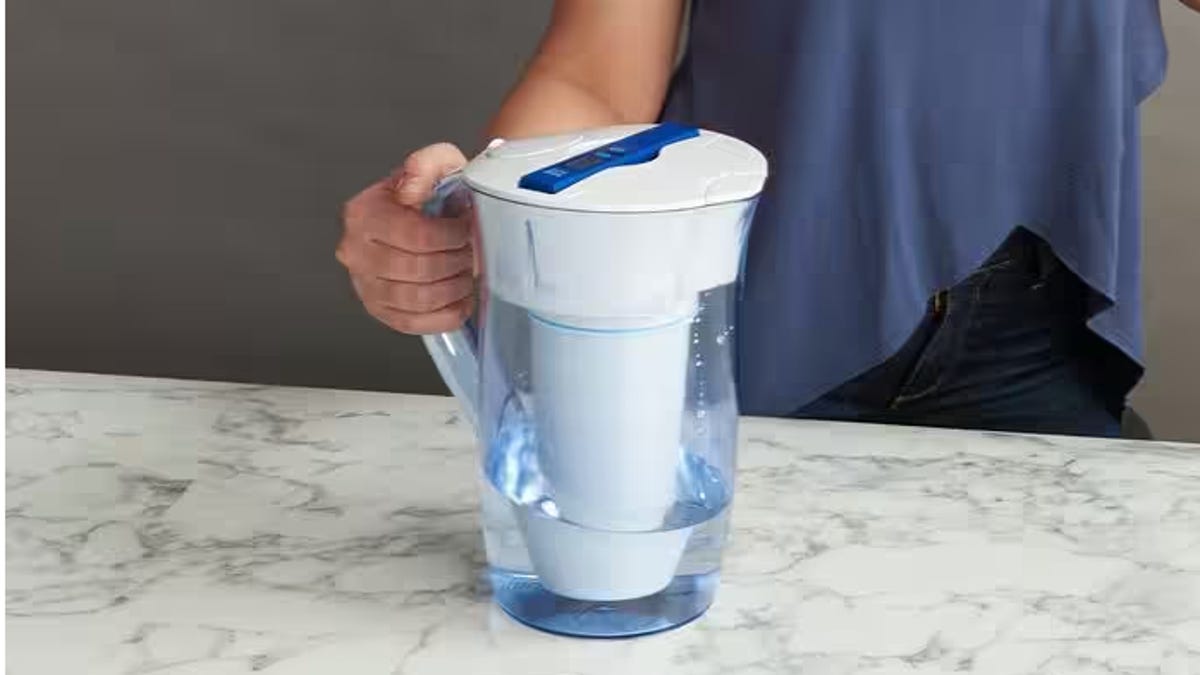As mentioned earlier in this article, there are quite a variety of contaminants worth removing from your tap water. The team here at our lab settled on three primary tests to benchmark the efficacy of these filters: TDS, pH and chlorine. Before we began the actual testing, each pitcher was removed from the packaging, cleaned and then prepared per the manufacturer’s instructions. This is very important, as most of these filters utilize activated carbon filtration, which will deposit sediment into the first batches of water that you filter if not cleaned properly in advance.
Testing for TDS
TDS stands for total dissolved solids and encompasses many different impurities present in water. Examples of the most common TDS include “calcium, magnesium, sodium, potassium, bicarbonate, sulfate, chloride, nitrate, and silica,” according to the US Geological Survey. In practice, calcium and magnesium deposits in your tap water result in so-called “hard water” that tastes bad and can be actively detrimental to your health at higher concentrations. (Read more about TDS here and here.)
We began TDS testing by mixing an 8-gallon bucket of tap water, measured at 220 ppm TDS, with table salt until we reached a TDS measurement of 300. Generally speaking, 50-150 TDS is considered an ideal range for drinking water. We used an Orapxi water quality tester to take these measurements and since the ZeroWater filter includes a TDS tester as well, all TDS readings were verified on both devices. Once we had established our control source, we measured 1 liter of the 300 TDS water into each of the water filter pitchers and allowed the full quantity to pass through the filter.
Once finished, we measured the TDS again and noted the percentage change. This process was repeated for higher and lower TDS concentrations, and our findings indicate that each of the units we tested is very consistent at removing the same percentage of overall TDS from any water passed through it.
Testing for chlorine
Chlorine in your drinking water may sound strange, but it is actually a very common practice for water treatment facilities to add chlorine to the water supply as a disinfectant. This is extremely effective at getting rid of other, nastier contaminants in the water, but the World Health Organization estimates that a concentration of ~0.2-4 ppm is standard for tap water, indicating that at least some is left over after disinfection.
For our testing, we decided to ramp things up a notch and test water prepared at a concentration similar to that of a swimming pool — 10 ppm chlorine. This gave us a clear indication of the changes after filtration. Once again, each filter was tested with 1 liter of solution and compared to results from the water prefiltration and once again, filters such as the ZeroWater substantially outperformed the others.
Testing pH changes
Finally, during TDS testing, we also measured the change in pH. pH stands for “potential of hydrogen” and is used to quantify the acidity of a substance. A pH of 0 is extremely acidic, 7 is considered neither acidic nor basic, and 14 represents an extremely basic substance. Since the minerals that comprise the TDS in tap water increase the alkalinity, we expected the filtration process to decrease the pH of the water. Indeed this did turn out to be the case, and you can see a table of the pH changes below.
Here’s a table of our most recent TDS removal test results. The data represents an average of three test runs for each filter pitcher.
Test results
undefined
TDS (% change)
Aarke Purifier -39
Brita Metro Standard -45.6
Brita Everyday -45.6
Brita Longlast -3.1
Hydros -17.5
Larg self-cleaning -2.2
Lifestraw -2
Pur Plus -6
ZeroWater -100
